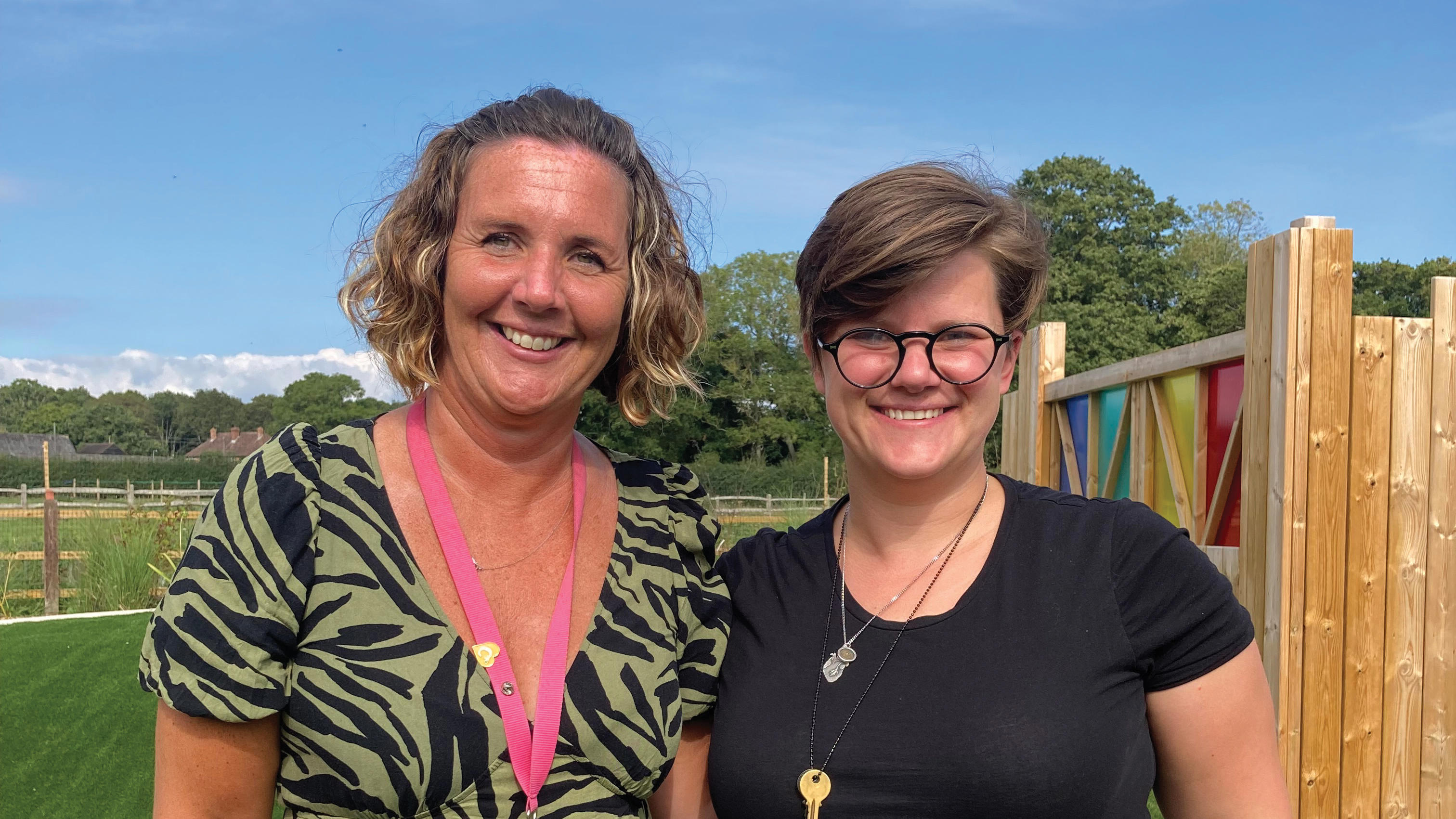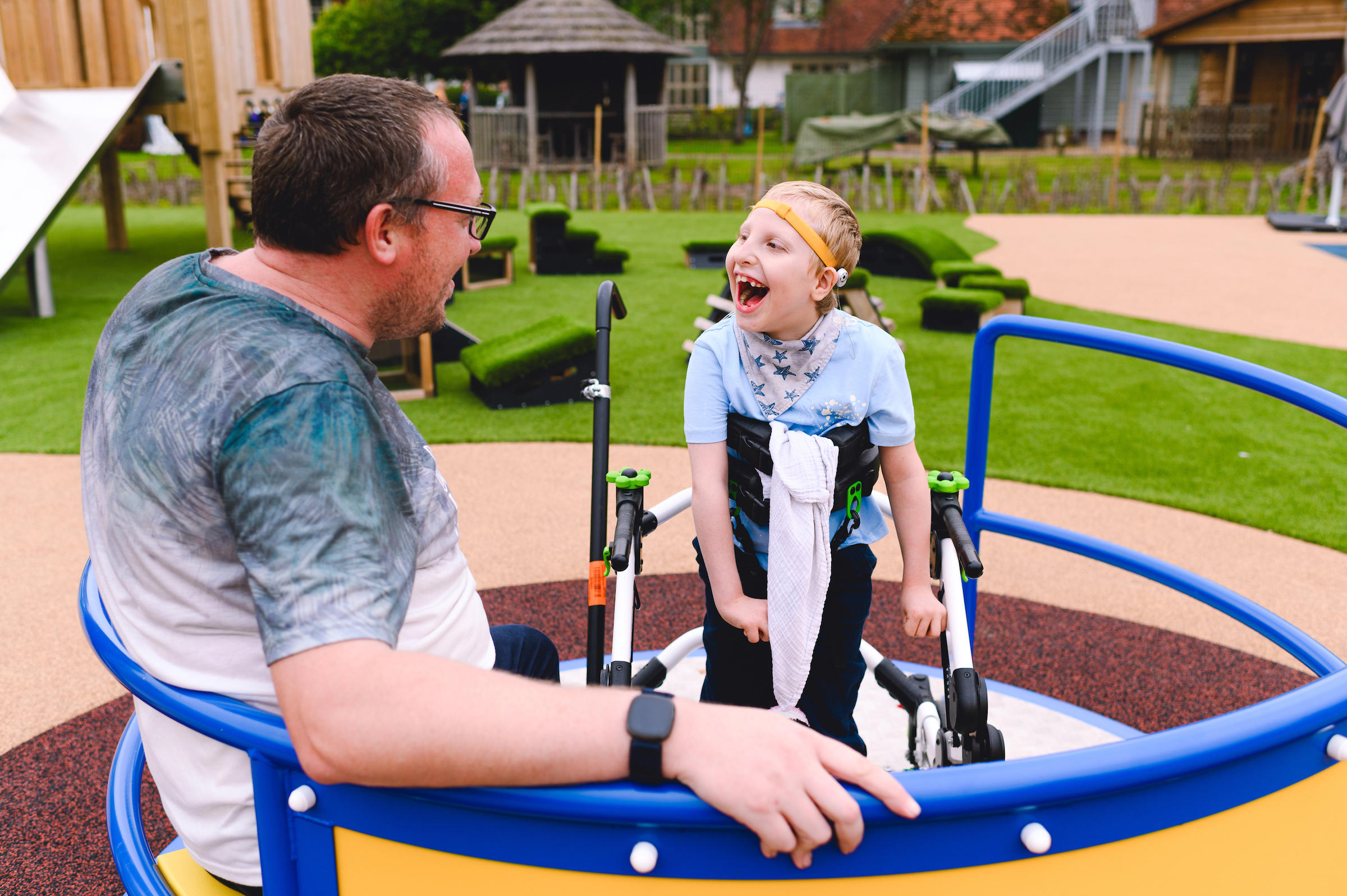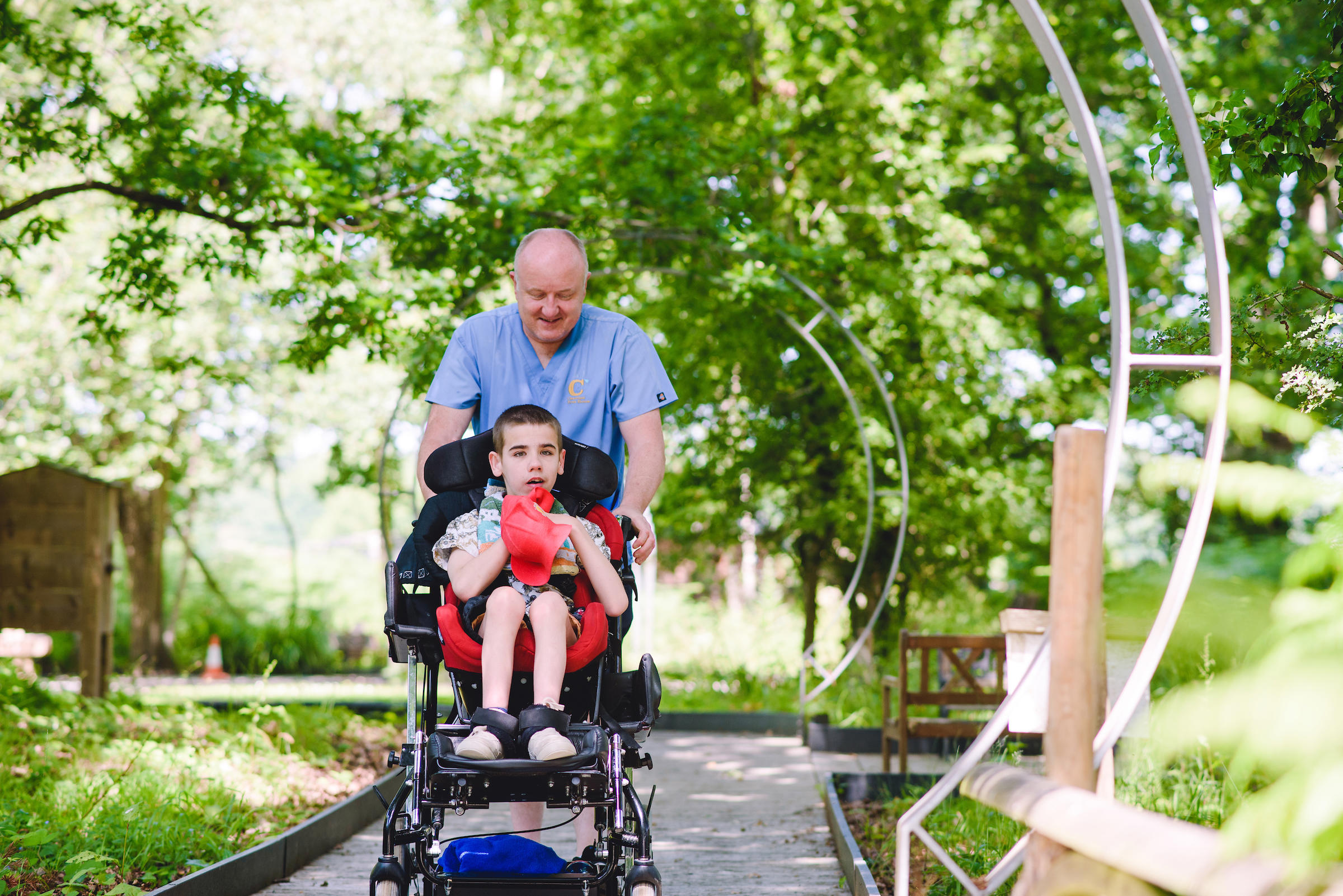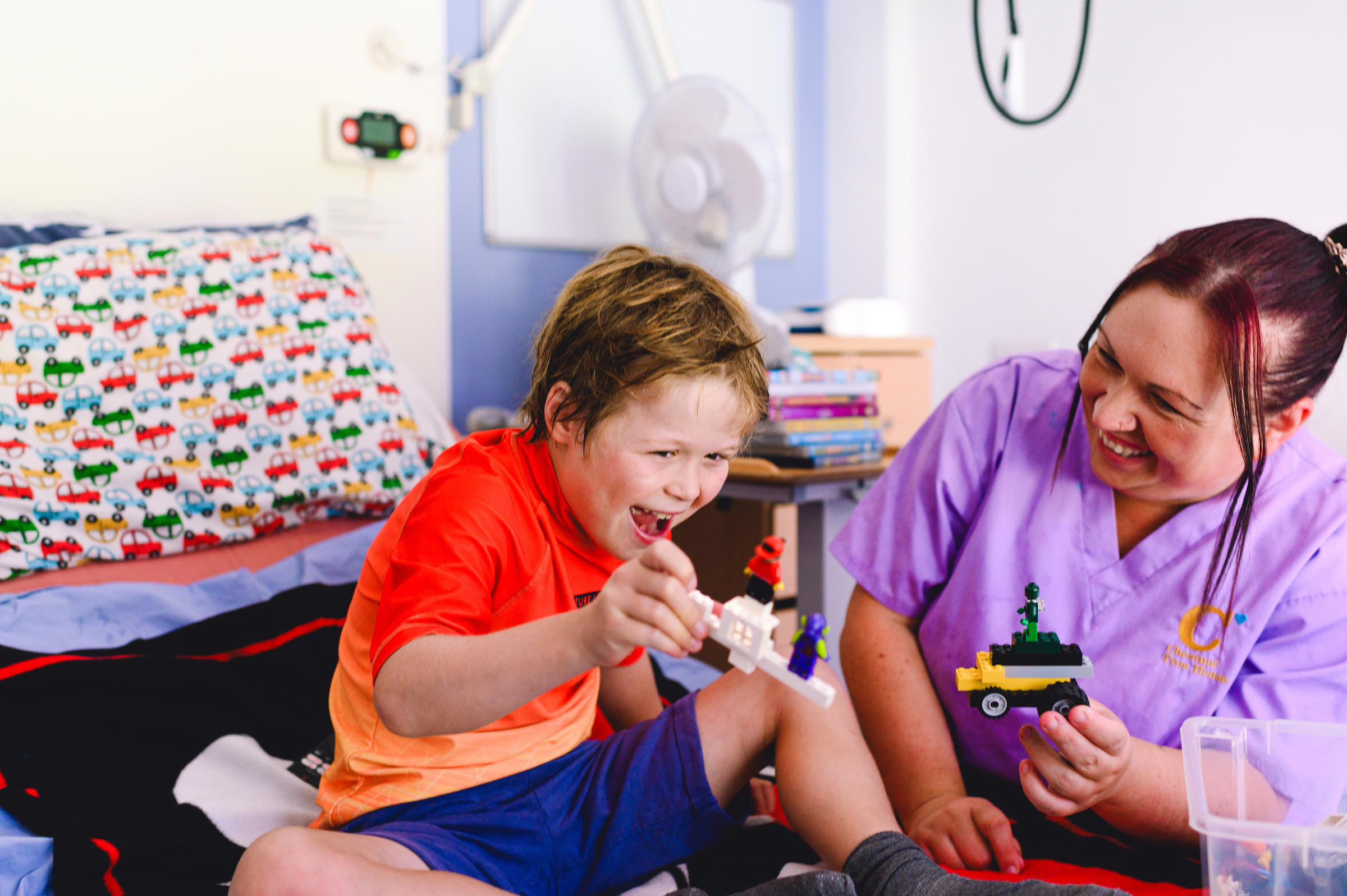At Chestnut Tree House, short lives are lived to the full. The team does its utmost to make memories and grant wishes, whether it’s zip wiring in a wheelchair or being dunked in spaghetti.
This children’s hospice is a life-affirming, colourful place with beautiful grounds, wonderful amenities and the gracious air of a Sussex country home.
The nurse-led team here can provide the very best of care on site to a child with a life-limiting or life-threatening condition and their family.
However, they struggle to offer the same high-quality care to other families, especially those whose children want to die at home. Because Sussex, like many areas in the UK, does not have its own specialist paediatric palliative care team.
Consequently, many children needing palliative care have little choice in where they die – and deaths can be more distressing than necessary for their loved ones.
We think about the whole child and the impact a treatment might have on themDr Linford
Families are struggling to navigate a complex care system alone and often come late to palliative care when their children are nearing the end of life.
Anna Jones, director of children’s services at Chestnut Tree House, is tireless in her advocacy, fundraising and passion. But she is tired of ‘living in the gap’ between what she and her team want to provide, especially in end-of-life care at home, and what they can offer in practice.
‘I have the most wonderful team here but there’s only so much you can achieve as a nurse-led unit,’ says Anna.
‘It’s distressing when you can’t give the specialist medical provision that children and young people deserve and need.’
What makes things harder is knowing the care children receive depends on their postcodes. Nationally, the picture is patchy and wholly unfair.
 HELP AT HAND: Anna Jones (left) and Hannah Linford
HELP AT HAND: Anna Jones (left) and Hannah Linford
ICBs (integrated care boards) have been required to commission appropriate palliative care for people in their area since the Health and Care Act 2022.
Yet, because of chronic underfunding for paediatric palliative care, there are not enough specialists, training places or commissioned services (see box, ‘Challenges faced’), let alone community children’s nurses who do the lion’s share of children’s palliative care.
Only a fifth of ICBs in the UK are meeting National Institute for Health and Care Excellence guidelines in children’s palliative care. Chestnut Tree House’s ICB does not commission paediatric palliative care.
Compounding this injustice is the fact that a child’s condition often determines whether they receive timely palliative care.
Oncology is relatively well funded: every child with cancer comes under the care of a central treatment centre and its palliative care team. But children with neuro-disabilities, for example, rarely receive support from specialist palliative care teams at regional centres. Their deaths are hard to predict; they may come close to death many times before dying.
Even the briefest tour confirms Anna’s mantra: it’s all about livingDr Jones
And what of the 15 per cent of Chestnut Tree House’s patient group with life-limiting conditions that have no diagnosis? ‘How do you put a trajectory on that?’ asks Anna.
Meanwhile, demand is rising for palliative care, which is about supporting children and families to live well, managing symptoms as much as end-of-life care. Medical advances mean children with life-limiting or life-threatening conditions are living longer: in England, their number has more than doubled since 2001 to about 86,600.
Holistic care
Hannah Linford – ‘Dr Hannah’ as her patients know her – was a general paediatric consultant. Now, she works in a specialist paediatric palliative care team, one of very few in the UK. The SPACE team is a partnership between Shooting Star Children’s Hospice in Guildford and the Royal Marsden NHS Foundation Trust.
The team Dr Linford works with at Shooting Star comprises a consultant in paediatric palliative medicine, other doctors, a nurse consultant and specialist nurses, supported by other services. Dr Linford also works within a separate team of specialists based at the Trust, focusing on palliative care and symptom management in children with cancer.
So, she’s well placed to assess the difference that such a team could make to Sussex. She’s visiting Chestnut Tree House today to help Anna ‘scope a model’ to propose to the ICB.
It was the death of two terminally ill babies in her care when she was a general paediatrician that prompted her career shift. ‘I didn’t have enough knowledge and experience to be able to make it better for the families,’ she says.
Far from withdrawing care, palliative care is all about creating a protective support structure. The families whom the SPACE team supports can have 24/7 access to specialist advice, whether they need a hospice stay for symptom management or a medical handover for paramedics.
We start from: how can we make this as good as we can for as long as we can?Dr Linford
Palliative care’s priorities are different: even the briefest tour of Chestnut Tree House, from its gaming hub to its dressing-up costumes, confirms Anna’s mantra, ‘it’s all about living’.
‘We start from: how can we make this as good as we can for as long as we can?’ says Dr Linford.
‘Some of our children are managed by lots of different teams and tertiary hospitals. Specialists can tend to think in silos; we think about the whole child and the impact a treatment might have on them. We want to work out what symptoms are adversely affecting the child and their family the most, and manage them so that they can enjoy the lives that they have.’
Giving the family choices and working in partnership with them is paramount. So too is preparing families practically and emotionally for different scenarios through what’s called parallel planning.
‘Whatever course the child’s illness takes, we’re ready so the child doesn’t have to suffer,’ says Dr Linford. ‘When they fall, we’ve got them.’
 LIFE-AFFIRMING: Here, and in the following pictures, some of the opportunities for children at Chestnut Tree House
LIFE-AFFIRMING: Here, and in the following pictures, some of the opportunities for children at Chestnut Tree House
The team works closely with other professionals to ensure the family’s wishes are respected and to spare them the agony of having to explain everything repeatedly. This might involve sending a directive to the ambulance service about a child’s resuscitation plan – or a specialist nurse to accompany the family to appointments as an advocate.
Ultimately, it’s about ensuring that death, when it comes, is as smooth and calm as possible.
‘If we’re expecting a child to die at home, we make sure they’re seen by a GP regularly to avoid it being an “unexpected death” so there’s no need for a post-mortem, the police don’t have to be called. If we can help minimise a family’s trauma on the worst day of their lives, that’s a privilege.’
Stuck in the system
Without the equivalent of a SPACE team who can join up the dots for them, families are left to find their own way through the acute sector, especially those whose child has a non-oncology condition.
One parent told Anna, ‘It’s not my son’s condition that upsets me most, it’s navigating the system.’ The boy was known to 27 different agencies.
It means families referred to Chestnut Tree House often arrive without the benefit of parallel planning. Many have stayed in the care of acute general paediatricians for too long because of the lack of this specialist support, Anna believes.
‘How do families say, “Stop”? If they’re having ventilation for their child’s breathing, why would they say no to TPN (total parenteral nutrition)? These families are on a hamster wheel. It takes a skilled professional to discuss ceilings of treatment.’
And sometimes there are delays in children accessing hospice care because of misconceptions – held by parents and professionals – that hospices are ‘just for dying’.
Whatever course the child’s illness takes, we’re ready so the child doesn’t have to sufferDr Linford
‘Parents so often say, “We wish we’d known. This is nothing like what we thought”. It takes the right people to be having those conversations with parents, because some would hear the word “hospice” and think, “You’re telling me my child’s going to die?”’
Most heart-breaking of all for Anna are the families left to navigate a child’s death at home alone – often teenagers who want to be ‘around all their stuff’. If the family calls an ambulance, and the crew don’t have the benefit of a hospice’s support, the paramedics may not know if the death is ‘expected’ or not.
‘You need people who know what they’re doing, otherwise that parent’s memory is: It was chaos. The professionals looked terrified.’
The mother of a child who died in hospital told Chestnut Tree House: ‘The hardest thing was having to leave him in the mortuary. I was so scared of him being alone in the dark.’ Baby Rupert was later transferred to Chestnut’s bereavement suite – where the lights were left on.
Brave conversations
If families had 24/7 support at home such as SPACE offers, hospital admissions and hospital stays would be reduced, Dr Linford and Anna believe.
‘Acute paediatric wards can house children with complex needs during an episode of illness often for weeks and weeks,’ says Dr Linford. ‘It’s very challenging for the ward teams: they can feel like they aren’t doing very much medically but the child is not yet safe to discharge.
‘If there’s a team that can help navigate that time-consuming patient-management journey and help arrange stepdown care, it’s massively beneficial for the paediatric team, and the child – and it saves resource.’
It all starts with a referral to the palliative care team – which means initiating difficult conversations. Dr Linford understands why these can be hard for her colleagues.

‘There can be a reluctance with acute paediatricians to have these conversations because they worry, “Have I missed something? Would someone else know the diagnosis and I don’t?”
‘You’ve built a relationship with this family and then you feel like you’re taking away their hope and letting them down. As a child’s paediatrician, making that shift is really challenging: I haven’t had to go on that journey with them, so it’s more straightforward for me. I can offer support to my colleagues and be a friend in the room for those conversations.’
What makes Anna and Dr Linford’s work so rewarding, despite the sadnesses, is helping a child have a ‘good death’.
The sooner those brave conversations begin, the earlier families access proper support, the greater the chances that a death will be ‘good’.

These discussions have to be euphemism-free. Talking about a child ‘going to sleep’ can leave young siblings waiting for the child to wake up again or afraid of going to bed, says Dr Linford.
‘If no one’s said to you, “Your child is dying,” you won’t hear it as a parent.
‘No parent ever wants to be the person who calls time but there will come a point when the child doesn’t need a transfusion or to have their bloods taken because the benefit isn’t worth the distress.
‘If you’ve signposted these things in advance, the parents feel able to say, “I think it’s time.” And you can affirm them: “You’re doing the right thing. This is what we spoke about.”
‘And when what should have been a really sad day ends with the child being with their family, with their dogs, in their front room, where everything is sorted and smooth, it can be beautiful.’
Or as Anna puts it, ‘when a child dies, you have one chance to get it right’.
Challenges faced
- Together for Short Lives estimates a £300m gap in NHS funding for children’s palliative care to meet NICE standards in the UK
- NHS England said it would end the £25m Children’s Hospice Grant this year – but recently renewed it for 2024/25
- Chestnut Tree House receives 17 per cent of its £5.5m annual care costs from government funding. The rest comes from donations and fundraising
- England has only 18 specialist children’s palliative care consultants.
Photos courtesy of the Chestnut Tree House

